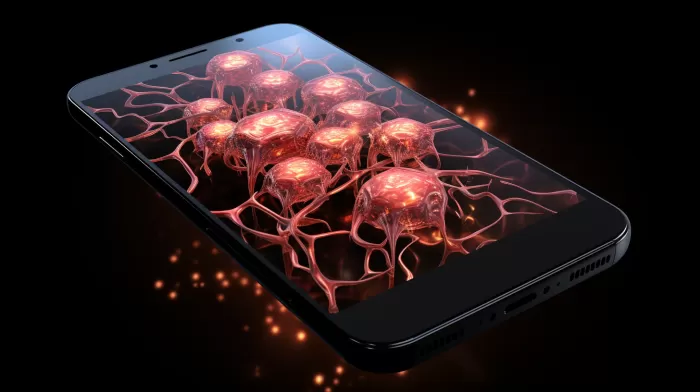Hold on to your hats — and your phones — because the World Health Organization (WHO) has revealed that radiation emitted by cell phones may indeed lead to brain cancer. In a recent statement, WHO’s International Agency for Research on Cancer (IARC) noted that radiofrequency electromagnetic fields, which are emitted by cell phones, could be potentially carcinogenic for humans. They believe this may be due to the increased risk for glioma, a malignant type of brain cancer, associated with wireless phone usage.
This alarming finding has led many, such as Dr. Jonathan Samet of the University of Southern California and Chairman of the group conducting the study, to conclude that there is a possibility of risk when it comes to cell phone radiation and cancer. According to Samet, “The evidence, while still accumulating, is strong enough to support a conclusion and the classification. The conclusion means that there could be some risk, and therefore we need to keep a close watch for a link between cell phones and cancer risk.”
The Importance of Additional Research
IARC Director Christopher Wild has emphasized the essential need for further research in order to accurately understand the long-term, heavy use of mobile phones and their possible consequences on public health. As he states, “given the potential consequences for public health of this classification and findings, it is important that additional research be conducted into the long-term, heavy use of mobile phones.” While waiting for more information to become available, Wild encourages individuals to take pragmatic measures to reduce exposure, such as using hands-free devices or texting.
The Process of Assessing the Risk
Scientists have conducted studies on radiofrequency electromagnetic fields to evaluate their possible effects on human health. This includes reviewing existing research, examining data from various sources, and considering factors that could influence the outcomes of laboratory experiments or epidemiological studies.
While the evidence continues to accumulate, so far, the results have been conclusive enough to warrant concern and further investigation. If the potential risk turns out to be true, this could have serious implications for public health, as cell phone usage has become a ubiquitous aspect of modern life.
Steps You Can Take to Reduce Your Risk
In the meantime, what are some measures you can take to minimize your exposure to cell phone radiation? Here are some tips you can follow:
- Use Hands-Free Devices: By using a hands-free device, such as earphones, you can avoid holding your phone close to your head, reducing the amount of radiation exposure to your brain.
-
Text Instead of Calling: Texting allows you to maintain a greater distance between your phone and your head, reducing the amount of radiation absorbed.
-
Limit Phone Usage: Try to minimize the amount of time you spend on the phone, especially if you find yourself in areas with a weak signal. A weak signal causes your phone to emit more radiation as it attempts to connect to the nearest cell tower.
-
Switch Sides While Talking: Changing the side of your head that you hold your phone while talking can help prevent constant exposure to the same area, potentially reducing the risk of cancers or tumor growth in that specific part of the brain.
-
Don’t Sleep with Your Phone Near Your Head: Placing the phone away from you while you sleep can reduce radiation exposure overnight. Some experts even recommend leaving the phone in another room or turning it off completely.
The Bottom Line
While the health risks associated with cell phones are still not completely understood, it’s wise to take precautions and minimize exposure to radiation. Keep a close watch on the latest research and follow steps to maintain a safe distance between your phone and yourself. Until more definitive conclusions are reached, taking proactive measures can prepare us for any potential health challenges that may emerge down the line.



